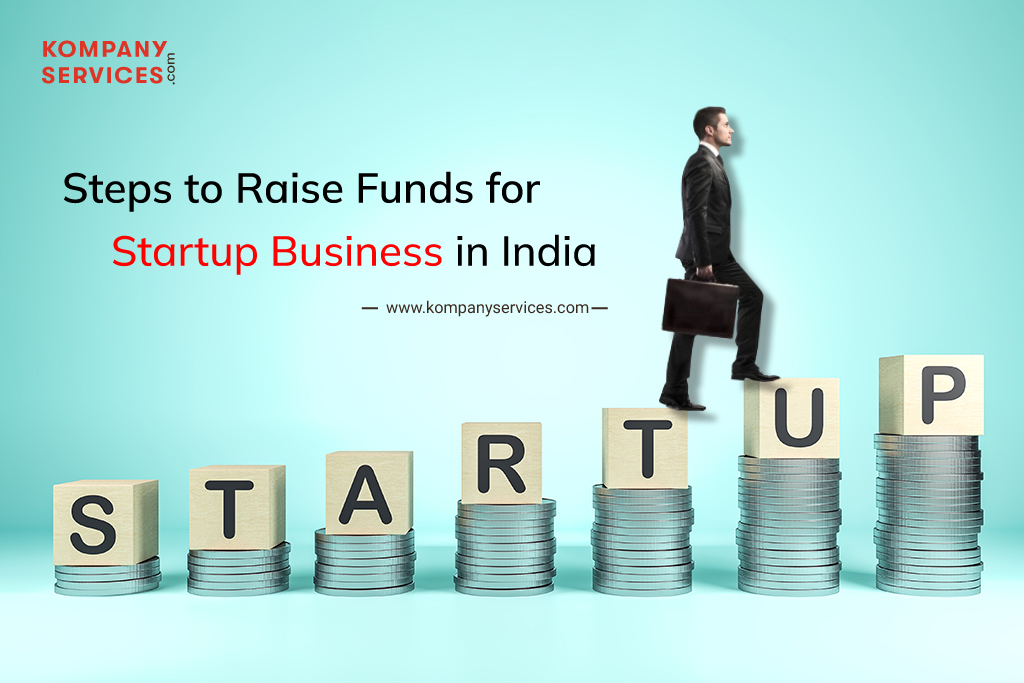India is rising as a hotbed for entrepreneurship and innovation. Startup culture is thriving like never before, thanks to rising demand for new products and services. One of the most important variables in determining a start-up’s success is the ability to raise funds and properly deploy them. There are numerous possibilities for startup business finance in India. In this post, we will go over how to raise capital for a new firm in India and the various stages of startup finance.
A startup is a recently established business that priorities innovation, scalability, and satisfying a specific need or market need. Startups often operate with little financial resources and are driven by a small group of entrepreneurs. They frequently employ technology in their attempts to disrupt established industries or propose novel solutions.
Cred, Swiggy, Meesho, Cult Fit, and other successful companies in India span a variety of industries.
Why do startups require funding?
Before raising finances, a company must determine the need for them. The following are the most common reasons why startups require finance.
- Product Development; Startups typically put novel products on the market. As a result, they demand funding for R&D, product design, prototype creation, and so on. Manufacturing startups require physical infrastructure, including buildings, machinery, and manufacturing facilities. As a result, they demand a significant amount of money to finance infrastructure.
- Raw Materials and Equipment; Most companies are involved in the manufacture of tangible items, thus they require capital to purchase raw materials and equipment. However, the cost is determined by the sort of product and the size of operations on which the business intends to operate.
- Working capital; Aside from the initial setup costs, companies require capital for day-to-day operations and cash flow management. Simply put, they require funds for working capital finance.
- Hiring Talent: The majority of startups are technology-driven, requiring highly educated engineers and software developers to create and improve their products. Such expertise typically demands competitive compensation, therefore companies need capital to hire and compensate them.
- Marketing & Sales: Startups frequently compete with industry leaders. As a result, in order to earn income and build a market presence, they must invest extensively in marketing and promotion.
- Legal and IPR costs: To profit from the Startup India Scheme, entrepreneurs must officially register themselves, which includes consulting expenses, government fees, documentation, and so on. Additionally, entrepreneurs provide novel items that require patent or copyright registration for protection. As a result, they require funding for legal and intellectual property rights (IPR) fees.
- Expansion: Startups start small, but if their product or service is successful, they expand into new markets or geographies. As a result, they require capital to grow corporate operations.
Different stages of startup funding.
The source of finance from which a company should raise funds should be determined by the stage at which the startup is functioning. Typically, the following are the five stages of startup fundraising.
Pre-Seed Stage.
This is the first stage of startup fundraising in which the entrepreneurs have an idea and are trying to realize it. Startups require less funding at this stage, and they have less options for raising capital.
Seed Stage
This is the second stage of startup fundraising, in which the company has completed the prototype (sample product) and needs to market test the product or service. It is known as a ‘Proof of Concept (POC)’, and if successful, the startup introduces its product/service into the market.
At this stage, the startup requires further cash for trials, talent acquisition, testing, and so on. Furthermore, more funding alternatives exist at this stage than at the previous one.
Series A Stage
At this point, the firm has already released its product/service in the market, thus it intends to extend its consumer base, diversify its offers, enter new markets, and so on.
Because product testing has previously been completed and performance can be measured using measures such as revenue, customer base, app downloads, and so on, businesses can approach more formal and recognized funding sources at this point.
Series B, C, D, and E
This is the fourth stage of startup funding, during which the company’s revenue and market growth accelerate. At this stage, entrepreneurs seek development in their businesses through market penetration and other expansion techniques that need significant funding.
Exit Stage
This is the final stage of startup funding, and it intends to transform itself into a large and established company. It is accomplished through the listing of shares or the merger/acquisition with/of another company. Paytm, Zomato, and more examples are provided.
Raising funds for a startup business involves meticulous preparation and execution due to its complexity. The following are the actions that startups should take to raise financing successfully.
Assessment of Funding Needs
First, a firm should assess its fundraising requirements and identify the optimum amount to raise. It should develop a milestone-based plan describing its objectives for the following one, five, and ten years. Planning for costs like as production, prototype development, and research is critical.
This analysis will help inform decisions concerning the next round of financing. Furthermore, the assessment must be completed properly to avoid wasting the investors’ money.
Assessment of Investment Readiness
Recognizing financial needs is critical, but so is determining the startup’s fundraising preparedness. Investors look for strong revenue estimates, profitability, market position, differentiation, and a motivated workforce. As a result, in this step, entrepreneurs should determine whether they are ready for financing or not.
Preparing the Pitch Deck
A pitch deck is a quick, visually appealing presentation that outlines a business idea and emphasizes its market potential, value proposition, and expansion strategy. It is a means by which a business communicates with potential investors.
Identification of the source of funding.
Determine the suitable financing source based on the requirements and stage of the project. A startup can raise capital from a variety of sources, as described above.
Due diligence
Prior to formalizing equity transactions, angel networks and venture capitalists conduct extensive due diligence. They evaluate the startup’s previous financial decisions, as well as the team’s qualifications and background.
This diligence analyses the startup’s growth claims, market data, and helps to anticipate any potentially problematic activities. Following satisfactory due diligence, funding is completed according to the agreed-upon parameters.
Startups’ Fundraising Challenges
Fundraising is a difficult task. Startups face a number of challenges while raising financing for their businesses. The following are some common challenges that entrepreneurs experience when raising money.
Unproven Business Model.
- First, for any endeavor to be successful, it must discover the correct market fit and the type of people it will serve by delivering products and services.
- Startups struggle to raise funds since their business models have not been proved. Investors regard them as hazardous in the absence of evidence, therefore they must demonstrate their income generation capabilities through market research and testing.
Lack of track record
Investors are cautious to finance firms that lack a strong history or track record, reducing credibility. The investor’s aversion to risk makes it difficult to set acceptable valuations and obtain finance.
Competition for Limited Funds.
Raising funding for a startup is difficult because of the fierce competition, particularly for early-stage enterprises. Investors’ needs for a track record pose difficulties for newcomers. Furthermore, this competition may drive up company valuations, rising fundraising costs and eroding ownership.
Underestimating funding needs
Startups face substantial problems if they underestimate their early fundraising requirements. Lack of finance impedes critical activities such as marketing, hiring, and product development, further limiting the company’s growth and overall success.
Choosing an appropriate source of funding
- The choice of a suitable source is critical to effective fundraising. There are various sources, each with advantages and downsides, and selecting the wrong pick can have major consequences.
- For example, engaging venture capitalists before the firm is ready may result in loss of control and premature equity dilution.
Alternative Funding Options for Indian Startups
Crowdfunding
This involves raising funds from a large number of people, typically through online platforms. It can be a simpler process compared to traditional bank loans, venture capital, and angel investors. However, the legality of equity crowdfunding in India is still debated. Notable platforms include SeedInvest Technology, GripInvest, StartEngine, GoFundMe, and Indiegogo.
Revenue-based Financing (RBF)
RBF allows startups to receive their future revenues upfront, which can be used for advertising and marketing spending. The payment is flexible, based on a pre-decided percentage of the startup’s monthly revenue. This type of financing has become more popular in India, with companies like Velocity, Klub, and GetVantage offering such services.
Government Grants & Funds
The Indian government supports the startup ecosystem through various initiatives and schemes. The Startup India program offers an 80% rebate on patent costs and income tax exemption for startups registered under the scheme. Additionally, the government launched the Startup India Seed Fund scheme in 2021, which provides funding support to early-stage startups.
Banks and NBFCs (Non-Banking Financial Companies)
Banks provide loans for all stages of business, but the terms differ. Startups can opt for bank loans for their different business needs like equipment loans, working capital loans, and startup business loans. Banks require higher collateral for idea-stage startups, but for equipment loans, there may be no need for collateral. Popular NBFCs and banks that offer loans to Indian startups include Bajaj Finserv, J&K Bank, HDFC Bank, and Lendingkart.
These alternative funding options aim to provide startups with the necessary financial support to grow and scale their operations.
The Startup India Scheme of the Government of India
The Government of India announced the ‘Startup India Scheme’ in 2016 to help Indian startups. Under this programme, the government offers a variety of incentives and perks to eligible startups recognised by the Department for Promotion of Industry and Internal Trade (DPIIT).
The following are the eligibility requirements for Startup India Registration:
- Type of Entity: The startup should be registered as a Private Limited Company, a Limited Liability Partnership, or a Partnership Firm.
- Age of the Entity – The entity’s age should not exceed ten years from the date of registration.
- Annual Turnover – The entity’s annual turnover should not exceed Rs. 100 crores in any of the financial years after its registration.
- Original Entity – The entity shall not be founded by the reconstruction or division of an existing firm.
- Innovation and Scalability – The entity should strive to improve or develop a method, product, or service, or have a scalable business plan.
Are you seeking a reputable service provider to register your startup? Look no further! Connect with our specialists today to easily register your startup.
FAQs (Frequently Asked Questions):
How can I attract angel investors for my startup?
To attract angel investors, focus on refining your business idea, demonstrating traction, building a strong team, and networking within the startup ecosystem. Participating in pitch competitions and startup events can also increase visibility.
What are the key metrics investors look for in a startup?
Investors look for metrics such as revenue growth, customer acquisition cost, lifetime value of a customer, gross margin, burn rate, and runway. Demonstrating traction, scalability, and a clear path to profitability is essential.
Is crowdfunding a viable option for raising funds in India?
Yes, crowdfunding has emerged as a viable alternative for raising funds in India, especially for early-stage startups and social enterprises. Platforms like Ketto, Wishberry, and ImpactGuru allow entrepreneurs to raise capital from a large pool of individual backers.
How do I determine the valuation of my startup?
Startup valuation depends on various factors, including market size, growth potential, competitive landscape, revenue projections, intellectual property, team strength, and funding stage. Valuation methods such as discounted cash flow (DCF), comparable company analysis, and the venture capital method are commonly used.
What are the common pitfalls to avoid during the fundraising process?
Common pitfalls to avoid during the fundraising process include lack of preparation, unrealistic valuation expectations, neglecting due diligence, overreliance on a single investor, and poor communication with stakeholders. Seeking guidance from experienced mentors and advisors can help navigate these challenges.
How long does the fundraising process typically take?
The fundraising process can vary in duration depending on factors such as the stage of the startup, the complexity of the deal, investor interest, and market conditions. On average, it can take anywhere from three to six months to secure funding.




